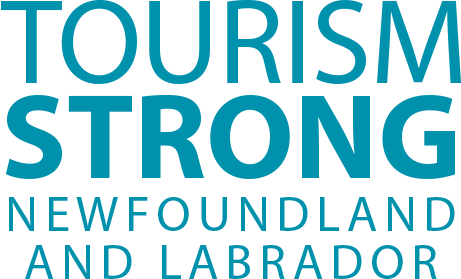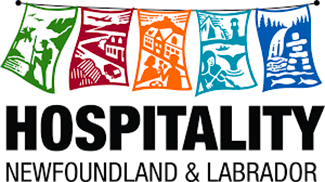It is important to monitor the public health guidance from the Department of Health and Community Services as the situation can change quickly. Please check www.gov.nl.ca/covid-19, which is updated daily.
As we continue to increase our personal interactions and return to a sense of normal life, we need to balance this potential risk with additional protective measures. Masks can play an important role in situations where physical distancing is not possible or is unpredictable. When worn properly, a person wearing a non-medical mask may reduce the spread of their respiratory droplets. By wearing non-medical masks in public indoor spaces, we further protect ourselves and others, including school-aged children and seniors, even if we have no symptoms. Wearing a non-medical mask in the community is not a substitute for physical distancing and hand washing.
If you are sick, stay home. If you go to a clinic or hospital, wear a non-medical mask.
If you go to a health care facility, you and any person with you should wear a non-medical mask. On arrival at the hospital, you will be given a medical procedure mask, which should be worn at all times within the facility.
Mask Types
Medical masks (surgical, medical procedure masks and respirators like N95 masks) should be reserved for use by health care workers and first responders, as much as possible. The effectiveness of non-medical masks varies depending on the type of material, the number of layers, and its method of use. However, even a simple cloth mask will provide greater protection than not wearing a mask at all. The World Health Organization provides the following advice on how to make your own non-medical mask: https://www.who.int/emergencies/diseases/novel-coronavirus-2019/advice-for-public/when-and-how-to-use-masks.
Similarly, face shields by themselves, are generally less effective than properly worn masks for preventing the spread or inhalation of droplets. Therefore, a face shield should not be worn instead of a mask, unless there are reasons where a mask cannot be worn (see below).
Proper Use of a Mask
Masks can become contaminated on the outside or when touched by hands, therefore avoid moving the mask around or adjusting it, and never share a mask with others unless it is thoroughly cleaned between uses.
Non-medical face masks should:
allow for easy breathing
fit securely to the head with ties or ear loops
maintain their shape after washing and drying
be changed as soon as possible if damp or dirty
be comfortable and not require frequent adjustment
be made of at least 2 layers of tightly woven material fabric (such as cotton or linen)
be large enough to completely and comfortably cover the nose and mouth without gaping
Non-medical masks should not:
be shared with others
impair vision or interfere with tasks
be made of plastic or other non-breathable materials
be secured with tape or other inappropriate materials
be made exclusively of materials that easily fall apart, such as tissues
be placed on children under the age of 2 years
be placed on anyone unable to remove them without assistance or anyone who has trouble breathing
The following videos demonstrate how to wear a non-medical mask:
https://www.canada.ca/en/public-health/services/video/covid-19-wear-non-medical-mask-face-covering-properly.html
Requirements
Effective August 24, 2020, wearing a non-medical mask that covers the nose and mouth is mandatory for people 5 years of age or older, with exceptions (see below), in the following public indoor settings:
public transit (buses, taxis, car services, public areas of ferries, etc.);
a retail business;
a service company;
a professional’s private office, where physical distancing cannot be maintained or physical barriers are not in place;
common areas of an office building (e.g. lobby, elevators, reception areas, conference rooms, washrooms, breakrooms);
a place where municipal or government services are offered;
a personal care business (e.g., hair salons, tattoo shops, tanning salons) (see exemptions for treatments below);
an animal daycare or grooming business;
a shopping mall or community market;
a place of worship;
a funeral home;
a theatre or performing arts venue;
a movie cinema;
an indoor entertainment business (see exemptions for physical activity below);
a rental room, community centre, or other venue used to host distanced gatherings;
a sports-related clubhouse;
a community museum or historic site;
a bingo hall;
a fitness centre, dance studio or yoga studio (see exemptions for physical activity below);
an arena (see exemptions for physical activity below);
a place where sports or recreational activities are practiced (see exemptions for physical activity below);
a restaurant or lounge;
a common area, including an elevator, of a tourist accommodation establishment (e.g. hotel, motel, bed and breakfast, rental cabins or cottages); and
a post-secondary educational institution (including colleges, universities and trades schools).
Non-medical masks will be required for all those who ride a school bus, once the school year begins. Non-medical masks will be required in common areas of high schools and junior high schools, if cohorts change classes. Staff will be required to wear masks in certain situations in schools. Students, children and staff returning to child care centres, schools, and afterschool programs should consult the relevant guidelines and requirements regarding mask and personal protective equipment usage.
In all other indoor public places which are not subject to the Special Measures Order but where physical distancing of 2 metres is not possible, wearing a mask is strongly recommended.
Exceptions
Masks are not required for the following people or situations:
Children under the age of 5. However, wearing a mask is encouraged for children between 2 and 4 years of age. It is not recommended for those under age 2.
People with physical or mental health exemptions – People whose particular physical condition or mental health prevents them from wearing a mask (these people are encouraged to wear a face shield instead, if possible), including but not limited to:
people who are unable to put it on or take it off by themselves due to a physical disability;
people with facial deformities;
peoples who, due to cognitive impairment, an intellectual disability, an autism spectrum disorder, or a severe mental health condition, are unable to understand the requirement, or for whom wearing a mask causes significant distress;
people who have a severe skin condition on the face or ears that is significantly aggravated by wearing a mask;
people with a severe respiratory condition or disease for whom a mask would further impair their breathing (please note that there is no evidence that indicates NMMs impair oxygenation of those with respiratory disease);
anyone who is unconscious, incapacitated or otherwise unable to remove the mask without assistance.
During treatments, services or physical activity – People who are receiving treatment, receiving a service or engaging in a physical activity or other activity that requires it to be removed. In these cases, they may remove their mask for the duration of the treatment, service or activity only;
Showing identification – people who remove their mask momentarily for identification purposes.
Workplaces – Requirements under the Occupational Health and Safety Act and Regulations, as well as any workplace specific health and safety plans, will continue to apply to workers. However, workers must wear their mask when they are in a publicly accessible lobby, reception area, hallway, stairway or elevator when physical distancing cannot be maintained and physical barriers are not in place.
Seated areas – People who are seated in the following places, provided physical distancing of two metres can be achieved between individuals or bubbles, (they must put their mask back on when moving around in these places):
in the classrooms of a post-secondary educational institution,
in a place where activities or services of a religious, cultural, or entertainment nature are offered,
in a restaurant, a food court, or a lounge.
It is recommended that people exempted from wearing a mask due to a health condition avoid, as much as possible, places where they are mandatory. If they go to these places, it is recommended that people who are exempted strictly maintain a physical distance of 2 metres from other people, except the people accompanying them, if any.
Updated on August 17, 2020


0 Comments